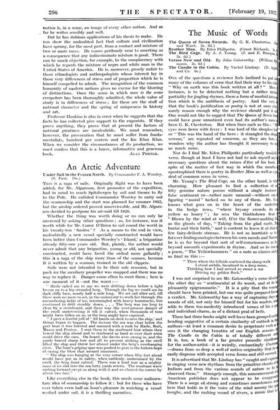Who are we All ?
DURING the nineteenth century the inhabitants of Europe were Aryans. They could trace their pedigree for some
thousands of years. They were descendants of a heroic tribe of white men who lived, with their cattle and sheep, their horses, dogs and geese, on a plateau in Central Asia. For clothing these early Aryans wore skins and woven wool. Their food was meat and grain : they neither ate fish nor drank milk. They worshipped the all-fathering Sky and his multitudinous children.
But the " advance of science " has left us very much in the air. From various ethnologists of the most profound erudition we have learn. t that the cradle of the white races was Russia or Scandinavia or France, Germany or Hungary or North Africa. Indeed, wherever we find a plain or plateau of a respectable size in the northern hemisphere, someone is almost sure to have planted there the banner of our ancestors. We have even been informed that there is no evidence for an Aryan race at all. " G. de Mortillet before the anthropo- logical society, expressed the view, already held by various anthropologists, that, since nothing was known of the Aryans, their alleged existence should be ignored."
It is part of Professor Hankins' plan to exhibit our ignorance and confusion in all its gruesomeness. He pits authority against authority, statistics against statistics ; and, as wa read his book, it almost begins to look as if there were no racial traits, no specific characteristics of race, and, finally, no races of any sort in our modern world. We are within an ace of believing that a European is as black as a Nubian and as yellow as a Chinaman. At least we can scarcely avoid con- sidering him as a man of golden-black hair, pinkish-olive com- plexion, and brownish-blue eyes. For Professor Hankins is very insistent that there are now no pure races, no pure types, unless it be among the aborigines of Tasmania. The rest of humankind, he attempts to prove, is so mixed and muddled that it is impossible to extricate the simple components of its
ancestry.
He criticizes very fully and mordantly the popular theories
of race, the concept that there is any peculiarly recognizable Anglo-Saxon element in the English-speaking peoples, any Nordic virtue in the German and Scandinavians, any Celtic fervour in the Irish. And he lends no helping hand in the darkness that follows. He has no theory of origins to advocate himself.
Professor Hankins' iconoclasm has partly been rendered necessary by the exaggerationi and follies of the past. He points out very valuably how racial myths have been used to bolster up the most unbalanced and separatist kinds of patriotism. Of the composers of these myths he remarks :-
" They greatly strengthened doctrines upon which have been based pernicious-forms of racial arrogance in Germany, England, and the United States. They assisted in the inflation of Teutonic Chauvinists and Pan-Germanista ; they lent aid and comfort to Anglo-Saxon Imperialists ; they gave a sense of moral righteousness to the spirit of racial intolerance."
He demonstrates also, that a modern nation is primarily a psychological unity. Racially it is composed of much the same elements as its neighbours. The proportion, may be different, the stress the stress upon certain traits may be different, but each
nation is, in a sense, an image of every other nation. And so far he writes sensibly and well.
But he has dubious applications of his thesis to make. He can show the undoubted fact that culture and civilization have sprung, for the most part, from a contact and mixture of two or more races. He comes perilously near to asserting as a consequence that any indiscriminate mixture is good. There can be much objection, for example, to the complacency with which he regards the mixture of negro and white man in the United States of America. He is, moreover, grossly unfair to those ethnologists and anthropologists whose interest lay in those very differences of stress and of proportion which he is himself compelled to admit. The recognition of the common humanity of modern nations gives no excuse for the blurring of distinctions. Once the sense in which man is the some everywhere has been thoroughly admitted, the whole value of study is in differences of stress ; for these are the stuff of national character and the spring of uniqueness in history and art.
Professor Hankins is also in error when he suggests that the .facts he has collected give support to the eugenists. If they pmve anything, they prove that at present the factors of national greatness are incalculable. We must remember, however, the provocation that he must suffer from funda- mentalists, hundred per centers and the Ku Klux Klan. When we consider the circumstances of its production, we must confess that this is a brave, informative and generous















































 Previous page
Previous page